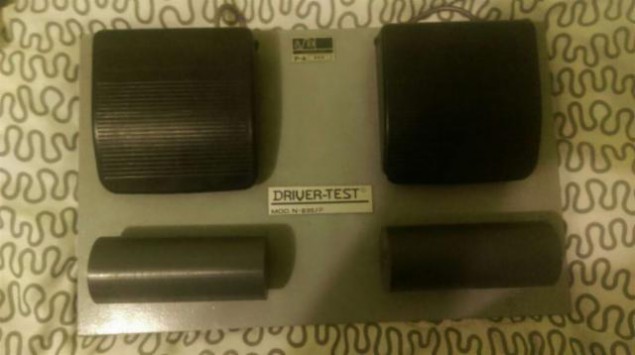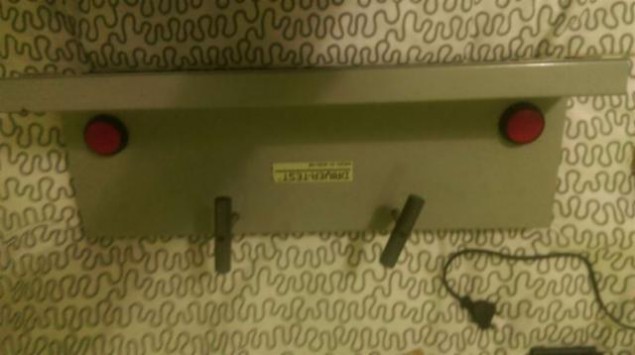Category Archives: MSX
New retro shop opening in Akihabara
Posted by Javi Lavandeira in Gadgets,Hardware,Japan,MSX,Retro,Technology | September 5, 2015Good news for all retro computer users, including MSX:
A new retro shop will be opening in Akihabara during the next few weeks. The name: BEEP.
According to their still under construction website (http://www.akihabara-beep.com), they’ll deal with retro computers, retro games, arcade games, and fanmade items. In the updates they’re posting on Twitter (@BEEP_akihabara) we can see that they have lots and lots of MSX-related stuff, including several piles of unopened, brand new Pioneer PX-V60 MSX computers that they’re selling for 19,800 yen each (they sell used ones for 8,000 yen).
They’re planning to open during the Japanese silver week, which is the week from September 21st to 25th. Unfortunately, that week I’ll be traveling out of the country, so I really, really hope they get a bit delayed so I can attend during the opening. :-)
Take a look at their Twitter feed: it’s worth it.
URL: http://www.akihabara-beep.com
Twitter: @BEEP_akihabara
Address:
Akihabara BEEP Nakaei Building (basement) 3-9-8 Sotokanda, Chiyoda-ku Tokyo 101-0021
MSXですがPX-V60の販売ですが中古は8000円と消費税、新品は19800円と消費税での販売です。お一人様一台まででお願い致します pic.twitter.com/6x8izI1vtx
— BEEP秋葉原店 (@BEEP_akihabara) August 10, 2015
並べるとそれらしくなってきました これから防犯の準備します pic.twitter.com/Qfza2OxCP4
— BEEP秋葉原店 (@BEEP_akihabara) September 3, 2015
Relearning MSX #23: Calling assembler routines from MSX-C
Posted by Javi Lavandeira in How-to,MSX,Retro,Technology | September 5, 2015In the previous post we learnt a couple things about how MSX-DOS manages files and runs programs.
This post is more technical: we’ll see how to use assembler routines from MSX-C.
This subject is a bit more advanced that what we’ve seen so far. Feel free to skip this chapter for the time being if you don’t need to mix C and assembler yet. The reason why we’re going to see this now is that there are advanced users playing around with MSX-C who have asked how to do this.
Standard types in MSX-C
First of all we need to understand how the standard MSX-C data types are stored in memory.
16-bit values are always stored in memory with the low order byte first (little endian), and the high order byte in the memory address after it.
There’s also a couple things we have to keep in mind:
- In MSX-C pointers are always 16-bit values, the same as integer values
- The numeric types short and int are exactly the same thing
| Type | Length (bits) | Range |
|---|---|---|
| char | 8 | 0 to 255 |
| short | 16 | -32768 to 32767 |
| int | 16 | -32768 to 32767 |
| unsigned | 16 | 0 to 65535 |
Relearning MSX #22: Programming for MSX-DOS (part 2)
Posted by Javi Lavandeira in How-to,MSX,Retro,Technology | September 2, 2015The previous post ended with the description of the first of the three MSX-DOS functions: I/O. This time we will see an introduction to the other two: file management and program execution.
File management
Without doubt, the most useful peripheral in a computer system is the storage device, whether it’s a floppy disk drive, a hard disk, optical media, or some kind of flash storage attached via a generic interface.
Early MSX computers supported only cassette tape as storage media. It was slow and somewhat unreliable, but it was very cheap.
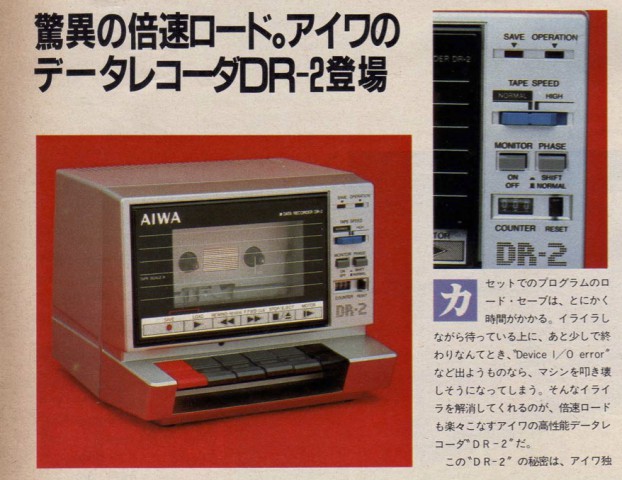
A cassette data recorder used in personal computers during the mid-80s. This model supported reading tapes at 2400 bps, twice the normal speed (MSX Magazine, May 1985) (Click to enlarge)
Besides the low speed, the big drawback of tapes was that the only way to access the data on them was sequentially: in order to access a program in a tape, you had to either read all other data stored before it, or manually rewind the tape to the location of the program you wanted to load. Needless to say, this wasn’t very fun.
Read more ›Relearning MSX #21: Programming for MSX-DOS (part 1)
Posted by Javi Lavandeira in How-to,MSX,Retro,Technology | August 28, 2015In the previous post we learnt about mnemonics and pseudoinstructions, symbols and labels. This is a good start, but learning assembler won’t be any use at all if we don’t also learn the environment where our programs will run. In our case this environment is going to be MSX-DOS, the MSX Disk Operating System. Let’s see what this means.
Functions of the operating system
The most basic functions of any operating system are:
- Input and output of data from/to peripherals (keyboard, screen, printer, etc)
- File management
- Running programs
MSX-DOS is able to handle all these, plus a few other tasks. let’s look at them in more detail:
Read more ›Relearning MSX #20: Assembly language overview
Posted by Javi Lavandeira in How-to,MSX,Retro,Technology | August 25, 2015In the previous post we learnt what an assembler does and also the differences between assembly language and two high-level programming languages: BASIC and C.
This time we’ll see an actual assembly language program and compare it with a BASIC program that does the same function. We’ll learn about pseudoinstructions and labels, and we’ll see an example of an assemble list for our first assembly language program.
Note: so far I’ve been using the terms assembly language and assembler, the first one when talking about the programming language we use to write programs, and the second one to refer to the program that handles the task of converting the source code into a file we can run. However, many people often use the term assembler to refer to the assembly language as well. I’m one of these people. Because of this, keep the following in mind:
- Assembly language (or just assembly) always refers to the programming language
- Assembler may refer to either the programming language, or to the program used to assemble the source code
The context in the sentence should always make it clear to see which one we’re talking about.
Let’s start:
Read more ›Relearning MSX #19: Assembly language concepts
Posted by Javi Lavandeira in How-to,MSX,Technology | August 23, 2015It’s been a looong while since the last post. Almost half a year. That’ll teach me to set deadlines for stuff I do in my free time.
Let’s continue where we left it in the last post: we’re going to start learning how to code in assembly language. It will be very handy even when working with C because often we will need to understand what the computer is doing behind the scenes. Plus, it’s actually very simple to learn (though mastering it and learning the underlying hardware will take some more time.)
In this series of articles we’re going to follow the book MSX-DOSアセンブラプルグラミング (MSX-DOS Assembler Programming) by Tetsuya Kageyama, published by ASCII Publications in 1988:
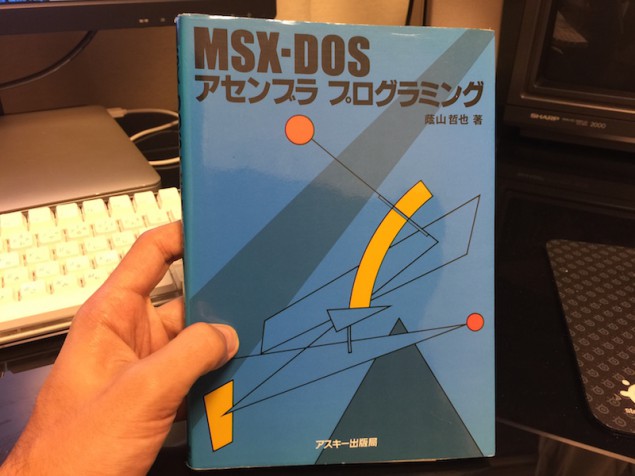
- MSX-DOS Assembler Programming (ASCII Publications, 1988)
Without further ado:
Assemblers and the assembly language
When reading a book on machine code, we often read sentences like this:
…to create programs in machine code we write an assembly language program and we use a tool called an assembler.
Sometimes the meaning of this isn’t obvious to everybody. What does the assembler do? What kind of programming language is assembly?
Let’s try and answer these questions.
Read more ›Last night I learnt that Ángel Cortés has just passed away. He was 58 years old, and one of the pioneers of Internet in Spain.
We first met in the early 90s, years before Internet access became popular or even easily available in Spain. At the time he was running NeXuS MSX BBS from his home, the only BBS in the country dedicated to MSX computers. I used to dial into his BBS from my MSX2 computer using a 300 bps modem. With his help I later started my own BBS and FidoNet node (LuzNET 2 BBS, 2:343/163).
During the late 90s we worked together at Intercom, back then one of Spain’s biggest Internet service providers. There he started Noticias Intercom, which later became noticias.com. It was one of the biggest news site in Spanish. He also started noticies.com, one of the first news sites in Catalan.
In 2002 he left Grupo Intercom. He asked me for help to start his own news portal: NoticiasDot. We actually ran the whole thing from a server in my Tokyo apartment for about two years, until we moved everything to a hosting company. I was helping him with all the technical stuff until around 2008.
In short, he’s the person who introduced me to computer networks and communications. If I hadn’t met him I probably wouldn’t be where I am today.
Thanks for everything, Angel.
A rarely seen MSX computer
Posted by Javi Lavandeira in Fun,Hardware,MSX,Retro,Technology | May 27, 2015This is an interesting find. Let me give you some background first:
In order to get your driver’s license in Spain you need to pass a test called psicotécnico. This test is designed to ensure that your hand-eye coordination and response times are normal. When I took the test many years ago, it consisted on a computer attached to a couple of foot switches and a couple of handles. On the screen there were a couple of bars that you could move horizontally independently from each other using the handles. The screen kept scrolling down simulating a couple of roads, and your mission was to keep both bars inside the road at all times.
The Spanish government ordered these systems exclusively from a company called ASDE (and they still do).
What’s interesting is that the computer they used was an MSX2. When I took the test they had a Philips NMS8245, but it seems that they also used computers from Sony. Everybody who got a driver’s license in Spain in the 80-90s had to go and play with this MSX.
Today somebody on Facebook found this: there’s one of these units for sale, complete with the controllers and software (a cartridge screwed into the top slot):
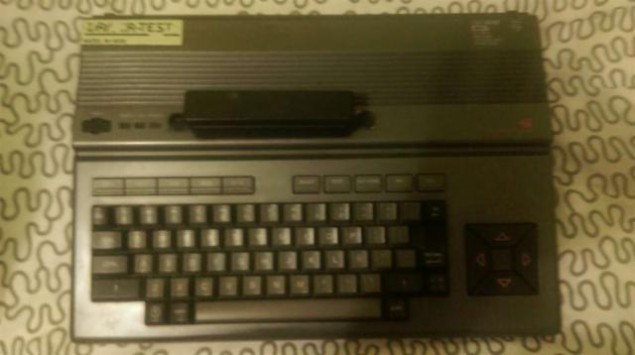
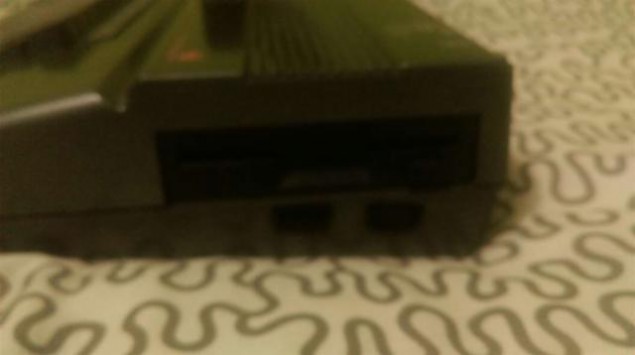
Nowadays these machines aren’t in use anymore. They’ve been replaced with a newer system, but it seems that the controllers are basically still the same:
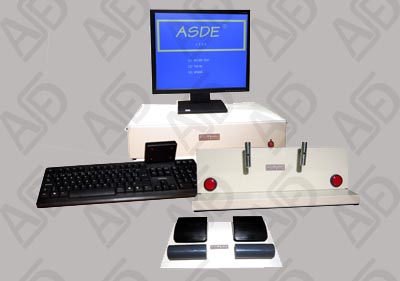
The new Driver-Test set. Probably running on a custom-built PC.
Here’s a video of a test in progress. The MSX version was exactly the same:
Seeing this machine brought back some nice memories. :-)
Update: a friend on Facebook reports that these MSX are still in use in some examination centers.
Japanese books for retro computer fans
Posted by Javi Lavandeira in Hardware,Japan,MSX,Retro,Technology | May 25, 2015During a conversation on Facebook earlier today I mentioned a couple of books by Japanese author Hiroyuki Maeda, and I promised to post more information later. These books are for retro computer fans, even those who can’t understand Japanese. Mr. Maeda has published several books about retro computers and game consoles, but in this post I’ll talk about two of them:
- 懐かしのホビーパソコンガイドブック (The Nostalgic Hobby PC Guidebook, ISBN 978-4-7755-2339-1)
- 海外のゲーム&パソコンガイドブック (The Oversea’s Game & PC Guidebook, ISBN 978-4-7755-2419-0)
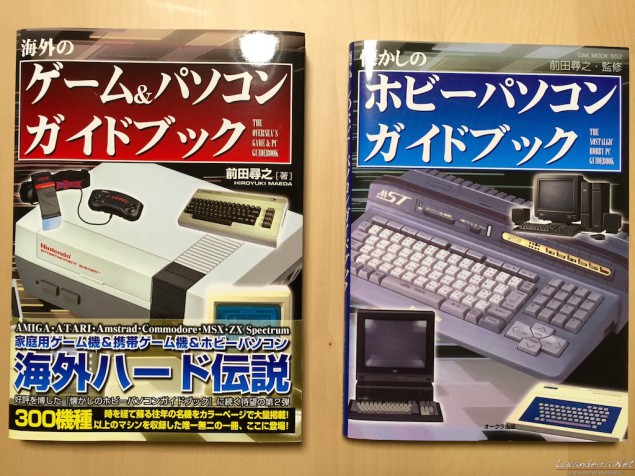
Left: The Oversea’s Game & PC Guidebook. Right: The Nostalgic Hobby PC Guidebook.
These books contain lots of information about hundreds of computer systems and consoles from the late 70s to the early 90s. Keep reading for a taste of what’s inside
Read more ›Restoration and whitening of a Panasonic FS-A1ST
Posted by Javi Lavandeira in Hardware,How-to,MSX,Technology | May 8, 2015I posted about this on my Facebook account a few days ago and several people asked for more photos and a followup, so here it is.
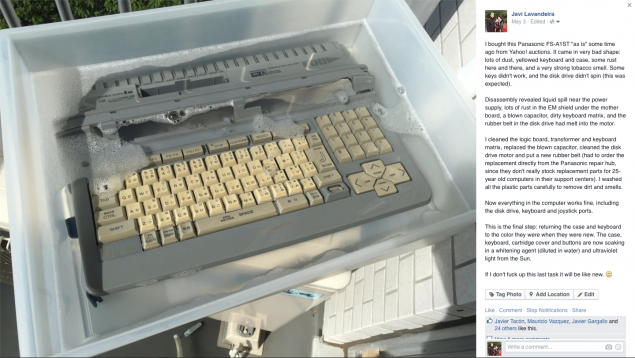
My Facebook post from May 3rd.
Background
Some time ago I bougth a Panasonic FS-A1ST computer on Yahoo! Auctions. The description said that the unit was “as is” and that it wasn’t guaranteed to work properly. The photos were a bit dark, but there wasn’t any obvious physical damage. The price wasn’t high, so I bid on it and I won.
The package arrived a few days later. I couldn’t wait to open the box and try it (I had been without an MSX turbo R for quite a while), but my happiness vanished quickly: the computer came in a terrible shape. It was very dusty, and both the case and keyboard had yellowed a lot, not to mention the tobacco smell.
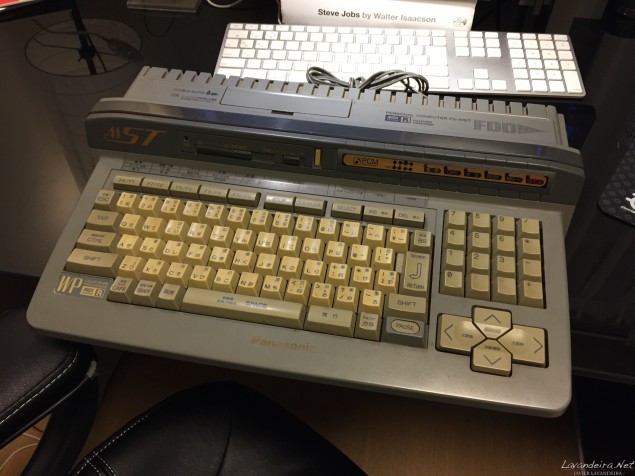
The computer as it arrived. Because of the bad light it doesn’t look as bad in the photo as it did in real life.



